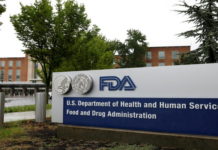The fact is that most in the biotech industry know that cell and gene therapies- CGT are regulated across the U.S. as biological products by the FDA’s Center for Biologics Research and Evaluation- BER and need approval of a biologics license application- BLA under Section 351 of the Public Health Service Act before being marketed.
In the years that have gone by, there has been a rising number of INDs every year, indicating the initiation when it comes to clinical studies. In 2019, the FDA went on to forecast that by 2025, it looks to approve 10 to 20 CGTs every year.1
However, it remains to be seen if the FDA and industry will go on to meet this goal, although it is worth noting that in 2023, the FDA went on to give its nod to 7 CGTs, thereby bringing the total to 35 approved to date. 2
Notably, after expressing some frustration with the pace of CGT approvals, the FDA recently went on to launch a number of initiatives as well as programs for such therapies in an explicit push so as to bring approved CGTs to patients sooner. Let us outline the key regulatory developments that happen to be relevant to sponsors who are seeking regulatory approval of CGTs for commercialization across the U.S.
A New Super Office
In February 2023, the FDA went ahead and created a super office in CBER and named it the Office of Therapeutic Products- OTP so as to meet the rise in workload from CGTs.3 OTP happens to be composed of as many as six offices, which go on to oversee the 14 divisions and 33 branches. 4 The novel structure happens to be aimed at syncing the expertise on different types of therapies in the center, which will ensure more consistent as well as timely advice for sponsors. For instance, OTP happens to have an office that is dedicated to the manufacturing of gene therapies and is called the Office of Gene Therapy Chemistry, Manufacturing and Controls- CMC, and also has a separate office which is dedicated to the manufacturing of cell therapies named the Office of Cellular Therapy and Human Tissue- CMC. CBER is also looking to add 125 new staff members within OTP so as to meet the workload associated with the review of CGTs.5 With this kind of reorganization, the FDA is now well poised for an increase as far as CGT applications are concerned.
Managing Safety Issues
The FDA has for long taken the position that CGTs raise unique safety considerations vis-à-vis other therapies because of their inherent potential for prolonged biological activity.
Long Term Follow-Up When It Comes to Clinical Subjects and Patients
To that end, the FDA has needed sponsors in order to build in consideration of long-term safety effects all across the development process. 6 Additionally, the FDA has also made clear that it anticipates the sponsors to conduct long-term follow-up LTFU studies for as much as 15 years on clinical subjects so as to track delayed adverse events. 7 These obligations can also be burdensome and, at the same time, even impractical since the development programs wind down and the companies go out of business.
The FDA looks forward to acknowledging these challenges, while at the same time also reiterating their significance when it comes to ongoing safety tracking. In the new guidance documents, which were issued in 2024, the FDA goes on to recommend that sponsors offer the agency a plan for follow-up, such as funding, in the event the sponsor ceases to function or decides to go ahead and inactivate, transfer, or even withdraw the IND. 8 Interestingly, the new director of OTP, Nicole Verdun, went on to signal some potential flexibility in LTFU expectations in 2022 when she went on to acknowledge the practical considerations that happen to be associated with LTFU. The agency happens to be considering hosting a public meeting in order to invite stakeholder input on such challenges. 9
Clinical Holds
The FDA has gone on to issue frequent clinical holds when it comes to CGT trials. Clinical holds happen to be orders that are issued by the FDA so as to pause a freshly proposed or ongoing clinical investigation because of safety concerns. These holds can go on to delay the clinical development program and result in certain serious financial repercussions, specifically when it comes to smaller biotechs. Often, sponsors can go ahead and work with the FDA, for instance, by way of submitting the essential analyses or documentation or even amending the protocol in order to address the FDA’s concerns. As per the FDA, among 585 CGT INDs freshly submitted to the FDA in 2021-2023, as many as 126, or almost 20%, got placed on clinical hold in the initial 30 days. 10 In total, 40% of all the FDA clinical holds in the recent years have been for CGT studies,11 however, these therapies constitute a much smaller portion- around 8% of drugs when it comes to development. 12
The fact is that the number of CGT clinical holds may as well decline in the near future. The new super office- OTP, is most likely to allow timelier as well as improved interactions when it comes to reviewing staff as well as sponsors, thereby bringing down the number of clinical holds. 13 Such efforts will be heightened by pressure from the members of Congress, who have gone on to call on CBER so as to avoid making use of clinical holds as a means to gain more time in order to review a clinical protocol.14
Availability In terms of expedited pathways, CGTs happen to be eligible for all FDA’s expedited pathways in the case of small molecule drugs as well as other biological products, such as accelerated approvals, breakthrough therapy designations, Fast Track designations, priority reviews, and the Regenerative Medicine Advanced Therapy- RMAT designation, which is designed to go ahead and expedite approval when it comes to regenerative medicine therapies.
CBER has gone on to explicitly state that it looks forward to relying more heavily on the fast approval pathway in terms of gene therapies. To this end, CBER leadership went on to recently state that a single-arm study, which happens to be based on a biomarker endpoint, backed by an animal model to demonstrate the correlations to reduced levels of a given protein, may as well be sufficient for fast approval, especially for pediatric rare diseases where conducting a randomized or placebo-controlled trial happens to be difficult. 15
It is well to be noted that the CBER leadership also went on to signal its openness to exercising a more flexible approach to the usage of a surrogate endpoint or even an intermediate clinical endpoint, as well as embracing a measure of uncertainty as to whether such endpoints do indeed forecast the clinical benefit. 16
A significant condition of the fast approval pathway is that, post-approval, sponsors must verify the clinical benefit. In this regard, CBER intends to make the most of the increased flexibility offered for RMAT-designated therapies by Cures Act 17 and also consider accepting continued follow-up pertaining to subjects from the pivotal trial in order to provide confirmatory evidence, not the conventional approach in terms of requiring sponsors so as to conduct an additional clinical study. For such gene therapies, then, a confirmatory trial could simply go on to follow the cohort. 18
Although the increased availability of the fast approval pathway goes on to open new opportunities for the sponsors, it also happens to pose some risks. Interestingly, the data that gets generated by way of accelerated approval may go on to satisfy the FDA for the purposes of approval but may also be insufficient for the payers in terms of purposes of reimbursement as well as coverage. 19
Moreover, as acknowledged by the CBER when it comes to pushing for greater usage of the accelerated approval pathway, it is indeed most likely that certain of the therapies that happened to be initially shown to be safe and effective may, on further study, go on to fail to verify the clinical benefit and ultimately get withdrawn. 20 The very recent Food and Drug Omnibus Reform Act- FDORA of 2022 has gone on to empower the FDA’s withdrawal authority by way of streamlining the rapid approval withdrawal process and, at the same time, making it less onerous for agencies to go ahead and bring about such proceedings.
Elevated Opportunity for Interactions with the FDA
Finally, there happen to be many opportunities for the sponsors of CGT to look for and obtain the FDA’s feedback all across the drug development process. Such kinds of meetings can help a BLA that goes on to meet FDA expectations. For instance, the RMAT designation goes on to offer early interactions so as to discuss any potential surrogate or even intermediate clinical endpoint that needs to be used so as to support the fast approval, in addition to the benefits that are also available in other expedited pathways like the supervision of the agency’s senior managers as well as experienced review staff and guidance in order to facilitate an efficient development program. 21 Such interactions happen to be intended to enable the sponsors to obtain the agency’s feedback on the novel surrogate endpoints as well as other key clinical trial design issues much before the trials begin, better aligning expectations as well as helping to reduce the risk of unnecessary delays in the development.
More of the FDA feedback happens to be available for sponsors of CGT by way of the FDA’s INTERACT program. This program is intended to offer agency feedback at a very early stage of development, much before conducting key nonclinical studies or filing an IND. 22 Instances of issues that can be addressed happen to include the design of IND-enabling toxicity studies, intricate manufacturing technologies or processes, and the development when it comes to innovative devices that have been used with biological products. 23 Furthermore, there may be certain additional opportunities for the FDA meetings through new Type D meetings that can get scheduled sooner than certain other types of regulatory meetings like Types B, B-EOP, and C and allow the sponsors to go ahead and discuss a limited set of issues with the agency—not more than two in regular scenarios or request follow-up pertaining to an issue raised throughout a previous formal meeting. 24
Outlook
The fact is that these recent regulatory developments go on to offer a hopeful outlook for CGTs as one witnesses a surge in such therapies in the pipeline and also an increasing interest from patients as well as healthcare providers. As CGT technology goes on to develop and more therapies happen to go through the FDA’s review, the agency is indeed constantly communicating its thoughts and even expectations by way of guidance documents as well as podium statements. There is advice to the CGT sponsors to keep in line with the FDA’s evolving positions since they plan their development programs as well as prepare for interactions along with the agency.
References-
- See FDA Statement, Statement from FDA Commissioner Scott Gottlieb, MD, and Peter Marks, MD, Ph.D., director of the Center for Biologics Evaluation and Research, on new policies to advance development of safe and effective cell and gene therapies (Jan. 15, 2019), https://www.fda.gov/news-events/press-announcements/statement-fda-commissioner-scott-gottlieb-md-and-peter-marks-md-phd-director-center-biologics.
- See FDA, Approved Cellular and Gene Therapy Products (Feb. 21, 2024), https://www.fda.gov/vaccines-blood-biologics/cellular-gene-therapy-products/approved-cellular-and-gene-therapy-products.
- See FDA, Establishment of the Office of Therapeutic Products (March 15, 2023), https://www.fda.gov/vaccines-blood-biologics/cellular-gene-therapy-products/establishment-office-therapeutic-products.
- See id.
- See Letter from Brett Guthrie and Anna Eshoo to Peter Marks at 1 (March 26, 2023), https://guthrie.house.gov/uploadedfiles/fda_cell_and_gene_therapy_cber_letter_3.26.23.pdf.
- See FDA, Guidance for Industry, Preclinical Assessment of Investigational Cellular and Gene Therapy Products at 26 (November 2013), https://www.fda.gov/media/87564/download.
- See FDA, Guidance for Industry, Long Term Follow-Up After Administration of Human Gene Therapy Products (January 2020), https://www.fda.gov/media/113768/download.
- FDA, Guidance for Industry, Human Gene Therapy Products Incorporating Human Genome Editing at 15 (January 2024), https://www.fda.gov/media/156894/download; FDA, Guidance for Industry, Considerations for the Development of Chimeric Antigen Receptor (CAR) T Cell Products at 33 (January 2024), https://www.fda.gov/media/156896/download.
- See US FDA Struggling With Long-Term Follow-Up Requirements for Gene Therapies, Pink Sheet (Oct. 18, 2023), https://pink.citeline.com/PS149041/US-FDA-Struggling-With-Long-Term-Follow-Up-Requirements-For-Gene-Therapies.
- See Letter from Kimberlee Trzeciak, Associate Commissioner for Legislative Affairs, FDA to Brett Guthrie (May 15, 2023) (on file with author).
- See Letter from Guthrie and Eshoo.
- See PhRMA, Cell and Gene Therapies (estimating 480+ CGTs in development as of June of 2022), https://phrma.org/Scientific-Innovation/Cell-and-Gene-Therapies; McKinsey & Company, Accelerating Clinical Trials to Improve Biopharma R&D Productivity (Jan. 22, 2024) (estimating 6,100 drugs in development in 2022), https://www.mckinsey.com/industries/life-sciences/our-insights/accelerating-clinical-trials-to-improve-biopharma-r-and-d-productivity.
- See US FDA Cell/Gene Therapy Office ‘Aggressively Recruiting’ Amid Reorg, Senior Staff Departures, Pink Sheet (Feb. 27, 2023), https://pink.citeline.com/PS147754/US-FDA-CellGene-Therapy-Office-Aggressively-Recruiting-Amid-Reorg-Senior-Staff-Departures.
- See Letter from Guthrie and Eshoo.
- See Gene Therapies Without Randomized Clinical Trials: Marks Outlines Rare Disease Development Path, Pink Sheet (Nov. 29, 2023), https://pink.citeline.com/PS149419/Gene-Therapies-Without-Randomized-Clinical-Trials-Marks-Outlines-Rare-Disease-Development-Path.
- See The Future of Accelerated Approval for FDA’s Marks? More Rare Disease Drugs and No ‘Hanging Chads,’ Fierce Biotech (July 28, 2023), https://www.fiercebiotech.com/biotech/peter-marks-says-fda-now-has-better-sense-rare-disease-biomarkers-will-more-accelerated.
- See 21 U.S.C. § 356(g)(7)(C).
- FDA ‘Leans In’ to Accelerated Approval for Rare Disease Drugs, MedPage Today (May 19, 2023), https://www.medpagetoday.com/special-reports/exclusives/104594.
- See Gene Therapies Without Randomized Clinical Trials: Marks Outlines Rare Disease Development Path, Pink Sheet (Nov. 29, 2023), https://pink.citeline.com/PS149419/Gene-Therapies-Without-Randomized-Clinical-Trials-Marks-Outlines-Rare-Disease-Development-Path; U.S. FDA Wants to Help Sponsors Generate Evidence CMS Needs, But Won’t Be An Intermediary, Pink Sheet (Oct. 24, 2022), https://pink.citeline.com/PS147209/US-FDA-Wants-To-Help-Sponsors-Generate-Evidence-CMS-Needs-But-Wont-Be-An-Intermediary.
- See Gene Therapies Without Randomized Clinical Trials: Marks Outlines Rare Disease Development Path, Pink Sheet (Nov. 29, 2023), https://pink.citeline.com/PS149419/Gene-Therapies-Without-Randomized-Clinical-Trials-Marks-Outlines-Rare-Disease-Development-Path.
- 21 U.S.C. § 356(g)(5).
- See FDA, OTP INTERACT Meeting (June 14, 2023), https://www.fda.gov/vaccines-blood-biologics/cellular-gene-therapy-products/otp-interact-meeting.
- See PDUFA Reauthorization Performance Goals and Procedures Fiscal Years 2023 Through 2027 at 21, https://www.fda.gov/media/151712/download?attachment.
- See id. at 21 and 24.






















